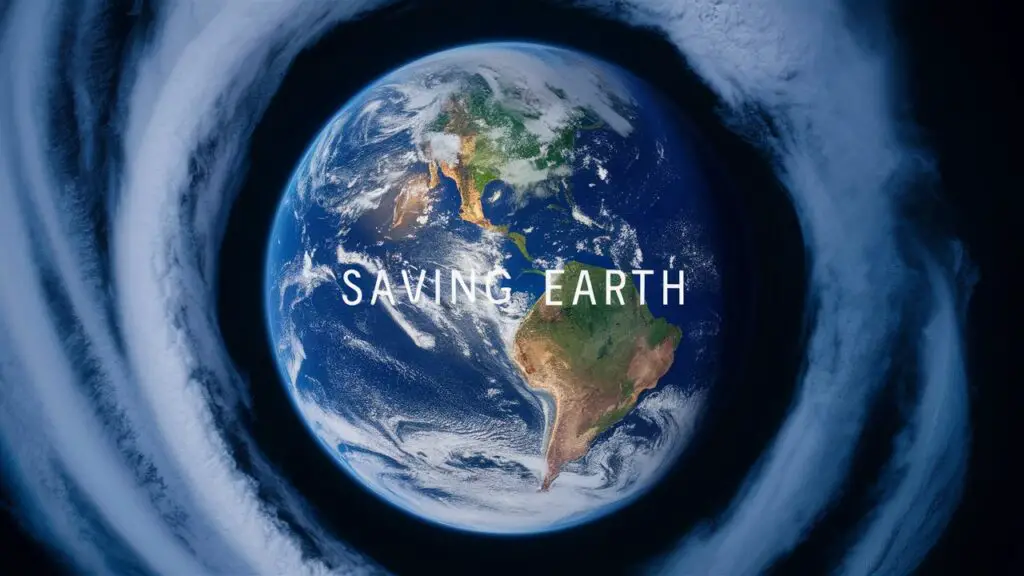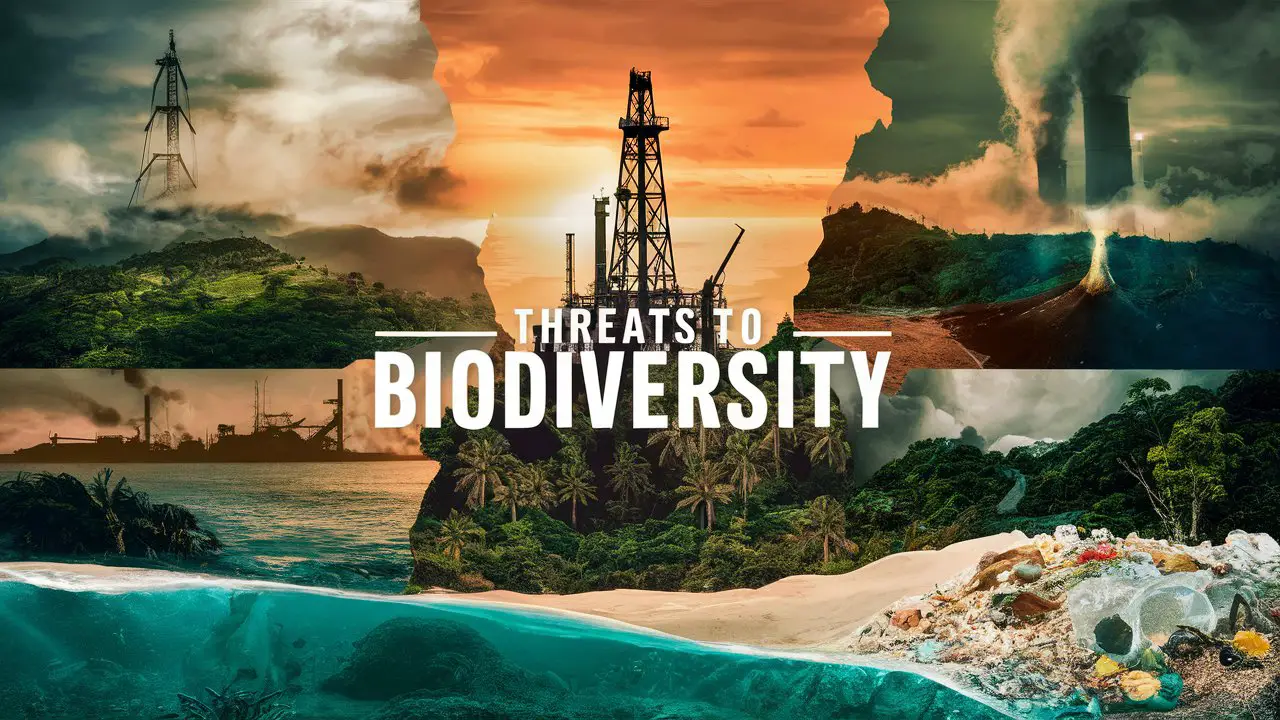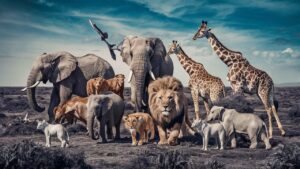As you examine the threats to biodiversity in the 21st century, you will gain insight into the complex factors driving extinction rates to alarming levels. With biodiversity declining rapidly across ecosystems worldwide, it is crucial to understand the primary drivers fueling this crisis. In this article, you will learn about the major threats to biodiversity such as habitat loss, overexploitation, invasive species, pollution, climate change and more. The discussion will provide details on how these threats impact species abundance and ecosystem health across terrestrial, freshwater and marine environments. A special focus is given to biodiversity hotspots, which harbor exceptionally high numbers of endemic species under serious threat. As you read this article, you will discover how human activities are dramatically accelerating extinction rates and what can be done before it is too late. Equipped with this knowledge, you can make informed decisions to help protect our planet’s irreplaceable biodiversity.
What Is Biodiversity and Why Is It Important?
Biodiversity refers to the variety of life on Earth at all levels, from genes to ecosystems, and the ecological and evolutionary processes that sustain it. Biodiversity encompasses the totality of genes, species, and ecosystems in a region or the planet as a whole.
Genetic Diversity
Genetic diversity refers to the total number of genetic characteristics in the genetic makeup of a species. It arises from mutations and adaptations that allow species to evolve over time. Higher genetic diversity means a species is able to adapt to changes in the environment. When a population loses genetic diversity, it becomes more vulnerable to threats.
Species Diversity
Species diversity refers to the variety of species in an ecosystem or region. According to the IUCN, there are currently over 1.2 million known species on Earth. Tropical rainforests are hotspots of species diversity, containing over half of the Earth’s plant and animal species. Species diversity is important for ecosystem stability and resilience.
Ecosystem Diversity
Ecosystem diversity refers to the variety of ecosystem types on the planet, such as forests, deserts, wetlands, rivers, and oceans. Each ecosystem contains a unique set of interacting species and abiotic factors. Ecosystem diversity ensures that we have access to essential resources and services like clean air, water, food, and raw materials. However, human activity has led to the loss and degradation of many ecosystems.
In summary, biodiversity is multi-faceted, encompassing diversity at the genetic, species and ecosystem levels. Maintaining biodiversity is crucial for ensuring the healthy functioning of ecosystems and the services they provide. However, biodiversity is under severe threat due to human activity, and we must take action now to curb species loss and protect our natural world.
Major Threats to Biodiversity in the 21st Century
Habitat Loss and Degradation
One of the greatest threats to biodiversity is the loss and degradation of habitats. As the human population grows, more land is being converted for agricultural use, infrastructure, and urban development. This results in loss of habitats for many plant and animal species. Fragmentation of habitats also occurs, isolating wildlife populations and increasing the risk of extinction.
Invasive Species
Invasive alien species are plants, animals, and microorganisms that are introduced into areas outside of their native range, often inadvertently. They outcompete native species and disrupt local ecosystems. Invasive species pose a major threat to biodiversity as they can push native species to extinction. Controlling invasive species is challenging and often requires active management.
Overexploitation
Overexploitation refers to the unsustainable harvesting of species for human use. This includes overfishing, overhunting, and illegal wildlife trade. Many species have declined significantly or gone extinct due to overexploitation. Sustainable management of natural resources is needed to curb overexploitation while still meeting human needs.
Pollution
Pollution from human activities threatens biodiversity in many ways. Plastic pollution impacts marine life, agricultural runoff creates dead zones, toxic chemicals accumulate in the tissues of animals and plants, and light and noise pollution disrupt natural behaviors. Reducing pollution and transitioning to more sustainable practices can help mitigate these threats.
Climate Change
Global climate change poses severe threats to biodiversity. Changes in temperature, precipitation, sea levels, ocean acidification, and the frequency/intensity of extreme weather events alter habitats and disrupt ecological relationships. Many species are at risk of extinction due to climate change, especially those with limited climate niches or dispersal abilities. Urgent action is needed to curb greenhouse gas emissions and help species adapt to changes that can no longer be avoided.

Habitat Loss and Fragmentation
Habitat loss and fragmentation pose grave threats to biodiversity in the 21st century. As the human population grows exponentially, natural habitats are converted for agricultural, residential and industrial purposes.### Deforestation
The destruction of forests, known as deforestation, eliminates habitat for innumerable plant and animal species. Tropical rainforests alone contain over half of the Earth’s plant and animal species, but roughly 32 million acres of rainforest are destroyed annually. At this rate, most tropical rainforests will disappear within 100 years.
Fragmentation
Habitat fragmentation occurs when large, continuous habitats are split into smaller, isolated fragments. Fragmentation inhibits movement and dispersal of plants and animals, and fragments may be too small to support viable populations. Edge effects along fragment borders also negatively impact biodiversity.
Solutions
To curb habitat loss and fragmentation, we must make conservation and sustainable land use a priority. Expanding protected areas, fighting deforestation, and promoting sustainable forestry and agriculture can help conserve biodiversity. Restoring and reconnecting fragmented habitats through wildlife corridors and green spaces in developed areas may mitigate the effects of fragmentation.
Habitat loss and fragmentation remain pressing issues, but by protecting habitats, using land sustainably, and restoring connectivity between fragments, we can conserve biodiversity for future generations. Collective action and policies to incentivize sustainable land use are desperately needed to reverse current trends. Our planet’s rich biodiversity depends on the actions we take today.
Overexploitation of Natural Resources
Overexploitation of natural resources poses a grave threat to biodiversity. Humans have harvested species and natural resources at an unsustainable rate, disrupting ecosystems and threatening extinction for many species.### Overfishing and Unsustainable Hunting
Marine and terrestrial food sources have been overharvested to meet the demands of a growing global population. According to the Food and Agriculture Organization, nearly 90% of the world’s marine fish stocks are either fully exploited or overfished. Unsustainable hunting of bushmeat in tropical regions also threatens many wildlife species. These practices have far-reaching consequences, as the removal of key species disrupts food webs and the overall health of ecosystems.
Deforestation
Deforestation for timber, mining, and agricultural land is a major driver of biodiversity loss. Rainforests contain the vast majority of the world’s plant and animal species, yet they are disappearing at an alarming rate. According to the World Wildlife Fund, half of the world’s tropical rainforests have already been cleared or degraded. Deforestation contributes to habitat fragmentation, loss of endemic species, and increased human-wildlife conflict.
Pollution
Pollution from human activities like mining, manufacturing, and transportation introduces chemicals and waste into the environment, contaminating air, water, and soil. Plastic pollution in particular poses a huge threat, as plastics accumulate in waterways and oceans, entangling and poisoning wildlife. Pollutants also enter the food chain, harming species at every level. Noise and light pollution similarly disrupt natural behaviors and habitats. Overall, pollution creates unhealthy conditions that threaten biodiversity across ecosystems.
In summary, overexploitation of natural resources, if continued at the current rate, will have devastating consequences for global biodiversity. Urgent action must be taken to implement sustainable management practices, curb emissions and waste, and preserve habitats for future generations. Protecting biodiversity is crucial for maintaining balanced ecosystems and ensuring a livable planet.
Invasive Alien Species
Invasive alien species pose a serious threat to biodiversity. As global trade and travel have increased, many plants and animals have been transported outside of their native ranges, either intentionally or accidentally. Some of these introduced species are able to adapt well to their new environments and spread aggressively, outcompeting native species.
Aggressive Spread
Invasive alien species are often able to spread rapidly in new areas due to a lack of natural controls that limit their population growth in their native ranges.They are frequently opportunistic generalists that can thrive in disturbed environments.As they establish themselves, invasive species alter habitats and disrupt ecological relationships between native species.Predators, diseases, and parasites that would normally keep the population in check in their native range are often absent in the new habitat.
Economic Impact
In addition to environmental damage, invasive alien species can have major economic impacts. They reduce crop yields, damage infrastructure, and negatively impact tourism and recreation. Controlling invasive species is extremely costly. For example, the United States spends over $100 billion per year controlling invasive plants alone.
Prevention and Management
The most effective way to limit the impact of invasive alien species is to prevent their introduction and spread in the first place. Strict regulations on the transport of plants and animals across borders are important. Early detection of new invasions is also critical so that rapid responses can be mounted before populations become established. Once established, invasive species can be difficult to eliminate entirely. An integrated management approach, including mechanical, chemical and biological control methods, is usually required to curb their spread and impact. Protecting and restoring native habitats and ecological communities can also help limit the spread of invasive species.
Invasive alien species are a complex problem that requires coordinated local and global solutions to protect biodiversity in the 21st century. Preventing new invasions, detecting them early, and employing integrated management techniques can help curb this threat. However, the spread of invasive species is often a symptom of broader issues of habitat loss and environmental degradation that also must be addressed to safeguard biodiversity.
Pollution and Climate Change
Greenhouse Gases and Global Warming
The increased emission of greenhouse gases such as carbon dioxide and methane from human activities like burning fossil fuels and deforestation has led to rising average temperatures on Earth. This enhanced greenhouse effect is trapping more heat in the lower atmosphere, causing global surface temperatures to increase at an unprecedented rate. As the climate continues to change, many species are at risk of extinction due to shifting climate zones and disruption of ecological relationships.
Plastic Pollution
Plastic pollution poses a major threat to biodiversity in marine and freshwater ecosystems. Microplastics are accumulating in aquatic food chains and harming organisms at multiple levels. Larger plastic debris can also entangle and choke wildlife like seabirds, turtles, and marine mammals. Plastic pollution affects over 600 species worldwide and causes tens of thousands of deaths each year. Urgent action is needed to curb plastic use and improve waste management.
Habitat Destruction
Human activity like land clearing for agriculture, logging, mining, and development has destroyed or degraded much of the world’s natural habitat. The conversion and fragmentation of habitat pose serious threats to biodiversity by reducing available habitat, isolating wildlife populations, and disrupting ecological processes. Many endangered species are at high risk of extinction due to continued loss and deterioration of habitat. Protecting and restoring habitat is crucial for conserving biodiversity.
In summary, human-caused pollution, climate change, and habitat destruction constitute three of the greatest threats to biodiversity in the 21st century. Urgent action must be taken to curb greenhouse gas emissions, reduce pollution, and protect natural ecosystems if we hope to stem the loss of biodiversity and ensure healthy environments for future generations. By making both individual and collective changes, we can work to overcome these challenges and build a sustainable future for all species on Earth.
Biodiversity Hotspots Most at Risk
As the human population continues to grow exponentially, increasing demand for land, food, and resources threatens biodiversity in ecosystems around the globe. However, some regions are at higher risk than others due to a confluence of factors. Biodiversity hotspots, areas with high levels of endemic species and habitat loss, are particularly vulnerable.
Tropical Rainforests
Tropical rainforests house the vast majority of terrestrial biodiversity, yet they are disappearing at an alarming rate due to deforestation for timber, mining, and agriculture. Rainforests in South America, including the Amazon, and Southeast Asia are experiencing the highest rates of deforestation, putting thousands of unique plant and animal species at risk of extinction.
Coral Reefs
Coral reefs are one of the most biodiverse ecosystems in the ocean, providing habitat for more than 25% of all marine species. However, coral reefs are highly sensitive to changes in water conditions and quality. Threats such as pollution, overfishing, and climate change are devastating coral reefs around the world, especially in coastal areas of Southeast Asia and Australia. As corals die off, the species that depend on them decline as well.
Mediterranean Ecosystems
The Mediterranean region, including coastal areas of Europe, North Africa, and the Middle East, was once covered by woodlands and shrublands. Today, most of the native vegetation has been converted to agriculture or urban areas. The Mediterranean hotspot is home to many endemic plants, and over 100 threatened bird species. Further loss of native habitats in this region could lead to irreversible biodiversity loss.
To safeguard global biodiversity, conservation efforts should focus on protecting the most at-risk hotspots and mitigating threats to their survival. Preserving biodiversity is crucial for maintaining the health of ecosystems and ensuring that they continue providing essential services for generations to come. By protecting the habitats of threatened endemic species, we can conserve unique and irreplaceable life on Earth.
Saving Earth’s Ecosystems and Species Diversity
As the dominant species on Earth, humans are responsible for the accelerated decline in biodiversity and the increasing threats to ecosystems in the 21st century. Protecting the diversity of life on the planet is crucial for ensuring the long term sustainability of ecosystems and human societies.
To curb biodiversity loss, we must make substantial changes to reduce the human footprint by controlling pollution, transitioning to sustainable energy and transportation systems, and conserving natural habitats. Protecting and restoring biodiversity hotspots and critical ecosystems like rainforests, wetlands and coral reefs should be a top priority. These areas contain the vast majority of Earth’s species and are being degraded at an alarming rate.
Governments, organizations and individuals can all contribute to safeguarding biodiversity. Expanding protected areas, strengthening environmental laws and policies, and providing economic incentives for conservation are effective actions governments can take. Non-governmental organizations play an important role in raising public awareness about biodiversity, conducting research and advocating for policy changes.
Individuals can make a difference through environmentally-friendly behaviors and lifestyle changes. Reducing waste and consumption, eating sustainable diets, and supporting organizations fighting to protect species and habitats are meaningful steps people can take to curb biodiversity loss. Education and community outreach are also valuable for inspiring change.
Protecting biodiversity is a shared responsibility that requires cooperation at all levels of society. Urgent action must be taken to avoid irreversible damage to Earth’s ecosystems and the essential services they provide. With a concerted global effort focused on biodiversity conservation and sustainable development, we can ensure that future generations inherit a planet teeming with life. By safeguarding biodiversity, we are securing the well-being of human societies and fulfilling our moral obligation as stewards of the living world.

Biodiversity FAQs: Your Top Questions Answered
What is biodiversity?
Biodiversity refers to the variety of life on Earth at all its levels, from genes to ecosystems, and the ecological and evolutionary processes that sustain it. Biodiversity includes diversity within species, between species, and among ecosystems. It encompasses the diversity of plants, animals, and microorganisms, the diversity of species interactions and dynamics, and the diversity of ecological functions and processes. Biodiversity is essential for the functioning of ecosystems and the benefits they provide to society.
Why is biodiversity important?
Biodiversity is vital for human well-being and economic prosperity. It provides us with food, clean water, fuel, shelter, medicines, and other resources essential for our survival. Biodiversity helps stabilize ecosystems, protects water resources, and enhances soil fertility. It also contributes to climate change mitigation by absorbing and storing carbon. Economic sectors such as agriculture, forestry, and fisheries depend directly on biodiversity and related ecosystem services. Many people also derive value from biodiversity through recreation and tourism.
What are the major threats to biodiversity?
The primary threats to biodiversity include habitat loss and degradation, overexploitation of species, pollution, invasive alien species, and climate change. As the human population grows, we convert more land for agriculture, industry, and settlements. Habitat loss and fragmentation threaten biodiversity by reducing and isolating wildlife populations. Overhunting, poaching, and unsustainable harvesting imperil many species. Pollution from human activities also harms biodiversity. Invasive species outcompete and prey on native plants and animals. Climate change is exacerbating these threats by altering temperature and weather patterns, sea levels, and the frequency/intensity of extreme events. Urgent actions are needed to address these threats and safeguard biodiversity.
What can I do to help protect biodiversity?
There are many actions individuals can take to support biodiversity conservation:
•Reduce your environmental footprint by conserving energy and water, reducing waste, and choosing sustainable transportation options. •Eat sustainably by choosing locally-sourced, organic foods and reducing consumption of meat and palm oil. •Choose sustainable wood and paper products. •Volunteer your time for local conservation efforts like habitat restoration, species monitoring, or environmental education. • Donate to reputable conservation organizations that work to protect biodiversity. •Spread awareness about biodiversity and encourage others to take action. Together, our individual actions can make a difference.
Conclusion
While the threats to biodiversity in the 21st century are considerable, you must not lose hope. There are still actions you can take to promote and protect biodiversity around the world. Get involved with conservation organizations, support sustainable policies, and make biodiversity-friendly choices in your daily life. Spread awareness about this critical issue. We all share this planet and its incredible diversity of life. Each of us has a role to play in being good stewards. Although the challenges are great, together we can make a difference. The future of countless species depends on the choices we make today. It is up to all of us to take a stand and defend our living planet.
Don’t Miss a Thing! Enhance Your Wildlife Photography with Ultra-X Night Vision Goggles.
GET NOW!






